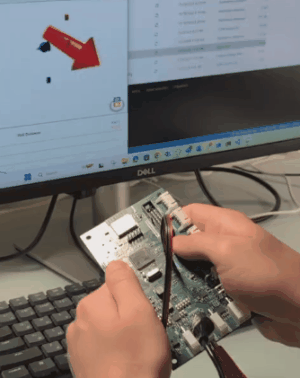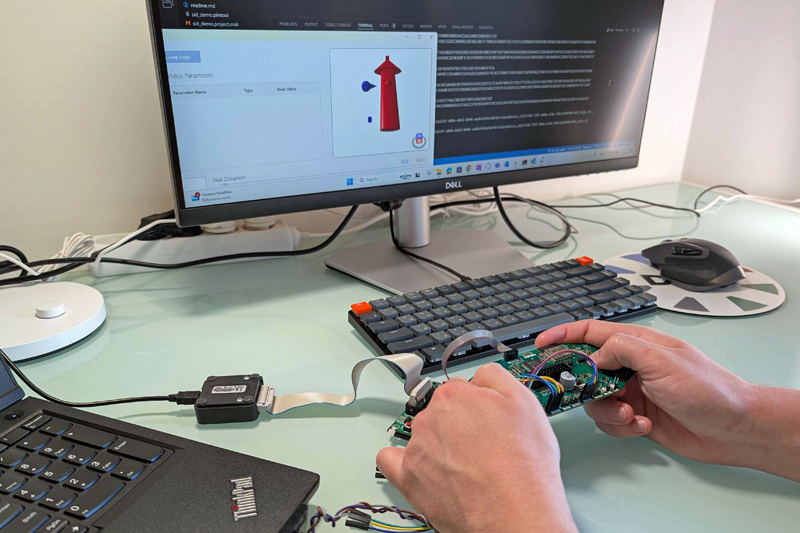DMC’s comprehensive approach included the full implementation of the hardware, firmware, and PC application design.
By integrating a solar panel and employing efficient power management strategies, the robot can maintain extended battery life, reducing the frequency of manual recharging.
A high-performance MCU and IMU established a robust foundation for orientation tracking. In addition to IMU and magnetometer, the robot’s sensors include multiple distance measurement sensors to improve obstacle detection. This comprehensive sensor data, combined with advanced motor control, supports efficient and adaptive navigation in a range of environments.

The inclusion of a wireless module simplifies over-the-air firmware updates and device configuration. The main MCU can be seamlessly placed into bootloader mode by the wireless module, ensuring smooth firmware updates for the main MCU. Additionally, the wireless module features its own firmware update capability, allowing for a comprehensive firmware update system.
DMC also developed a PC-based application that allows users to monitor sensor readings, adjust parameters, visualize the robot’s orientation, and control the robot in real time. This tool streamlined testing and optimization while laying the groundwork for more complex autonomous control algorithms.

Learn more about DMC’s Embedded Development and Embedded Programming expertise and contact us for your next project.